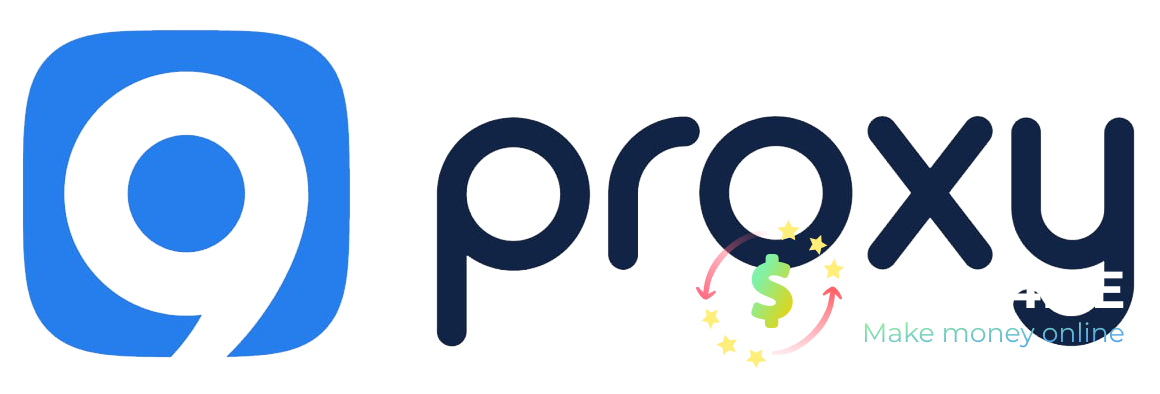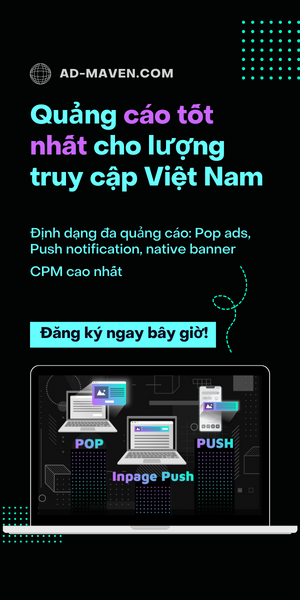Chương trình giám tuyển giai đoạn 2: Đánh giá các tiểu mục
Để trở thành một Người quản lý hiệu quả, bạn cần hiểu cách hoạt động của các đồ thị con, cách các ứng dụng đang sử dụng chúng và cách phát triển và sắp xếp bộ sưu tập các đồ thị con trên Đồ thị.
Trong Giai đoạn 2, Người quản lý sẽ tập trung vào đánh giá các đồ thị con, tìm hiểu sâu hơn về cách chúng hoạt động và đánh giá chất lượng của dữ liệu Web3. Bạn có thể tìm thấy tất cả các đồ thị con không ẩn trong Graph Explorer.
Hãy đóng góp càng nhiều một là bạn có thể. Bạn không cần phải hoàn thành tất cả các Nhiệm vụ. Để hoàn thành Giai đoạn 2, hãy gửi Biểu mẫu Hoàn thành Giai đoạn 2 bao gồm ghi chú và các liên kết có liên quan về những nỗ lực của bạn đối với Nhiệm vụ.
Video hội thảo
Thời gian
Subgraphs may appear technical but they’re just a portal into an alternate Web3 universe
Subgraphs make it easy for developers to build on top of protocols and for users to have a single source of truth for data. Subgraphs also abstract the need for a dApp’s back-end since they eliminate the need for proprietary servers and databases.
As part of Mission 1, Curators will need to learn about subgraphs and help others see through the subgraph portal too by creating content about subgraphs. Create guides, tutorials, blogs, podcasts and more, to help your fellow Curators better understand subgraphs. You can even conduct mentorship or 1-on-1 training sessions!
Ideas for guides and tutorials:
Given there are a limited number of guides or “how tos” we encourage you to optimize for quality over quantity — for example, partnering with other Curators, coming up with new ideas when guides have already been created. We also hope you will create guides that can help your fellow Curators learn how to interact with and deploy subgraphs as Phase 3 will focus on building subgraphs.
Use the Discord to find fellow Curators to team up with!
Mission 2: Evaluating Subgraphs
Subgraphs are only as valuable as they are complete, accurate and complex enough to support an application’s data needs. For example, an app might be looking to query aggregate trade volumes, user balances, crypto art prices, Everest projects and more.
In Mission 2, Curators will be assigned 5 subgraphs that are live today, to evaluate and provide suggestions to improve the subgraph quality. Your 5 subgraphs are in the email you received about Phase 2 docs — double check spam or reach out to [email protected] if you didn’t receive the email.
Fill in responses for each subgraph in the Phase 2 Completion Form about the complexity, accuracy, and completeness of the subgraphs:
Mission 3: Growing the Web3 Graph
The global graph of Web3 APIs is more than just subgraphs, it’s about ensuring the data we rely on is open and cannot be tampered with. That’s why we are calling on you for help identifying applications, projects and protocols that are not using subgraphs that are querying blockchain data today.
Since subgraphs are open APIs, many applications can rely on the same subgraph at once. Many subgraphs are already being used by a multitude of applications today such as the Uniswap, Synthetix, Balancer, Aave and Compound subgraphs. For example, the Uniswap subgraph is currently being used by Uniswap.info, mStable, mintr by Synthetix, Coingecko and many others!
For Mission 3, Curators are asked to come up with a list of applications that are not yet using subgraphs today but should be. Create the list in a separate Google doc or sheet and link it in the Phase 2 Completion Form or respond directly in the field.
There are hundreds of applications live on Ethereum that are querying data that’s already indexed by subgraphs. The Graph is powering Defi and Web3 applications to ensure they’re unstoppable.
A great place to start to find projects and applications is Everest. Additionally, these categories of applications tend to query a lot of blockchain data:
To go the extra mile ( only if you feel comfortable), you can also reach out to the project directly about using a subgraph. Sometimes projects aren’t aware that certain subgraphs are live or haven’t had a chance to learn about The Graph, so community education is key!
Here’s a template message to project:
Hey ____! Congrats on the success with _______ (application). I was looking around and noticed that you’re querying _____ (eg. trade volumes) type of data. Did you know there’s a subgraph that you can query for that type of data, that’s already being used by apps today?
Here’s a link to the subgraph: _____
A subgraph is an open API built by community developers on The Graph that lets many applications rely on indexed data in a decentralized way.
You can also tweet out a message or DM the team in Discord! If you decide to engage with other projects, we suggest you provide relevant subgraph links and share info about subgraphs and why they’re valuable. Please also ask the team or individual to join The Graph Discord so they can receive support with the integration as needed.
Community Contributions
Throughout the Curator Program we encourage you to also create content, marketing and other communications about The Graph, being a Curator and the value of decentralization and Web3 data, such as:
To complete Phase 2 you must submit the documents listed below:
Tài nguyên
Mọi thắc mắc xin được chuyển đến kênh Curator Discord. Nếu câu hỏi của bạn là cá nhân và bạn không cảm thấy thoải mái khi hỏi trong kênh Người quản lý bất hòa, bạn có thể gửi email tới [email protected] .
Cảm ơn bạn rất nhiều!
Để trở thành một Người quản lý hiệu quả, bạn cần hiểu cách hoạt động của các đồ thị con, cách các ứng dụng đang sử dụng chúng và cách phát triển và sắp xếp bộ sưu tập các đồ thị con trên Đồ thị.
Trong Giai đoạn 2, Người quản lý sẽ tập trung vào đánh giá các đồ thị con, tìm hiểu sâu hơn về cách chúng hoạt động và đánh giá chất lượng của dữ liệu Web3. Bạn có thể tìm thấy tất cả các đồ thị con không ẩn trong Graph Explorer.
Hãy đóng góp càng nhiều một là bạn có thể. Bạn không cần phải hoàn thành tất cả các Nhiệm vụ. Để hoàn thành Giai đoạn 2, hãy gửi Biểu mẫu Hoàn thành Giai đoạn 2 bao gồm ghi chú và các liên kết có liên quan về những nỗ lực của bạn đối với Nhiệm vụ.
Video hội thảo
Thời gian
- Địa chỉ KYC và Ethereum đến hạn vào Thứ Sáu, ngày 20 tháng 11 lúc 5 giờ chiều theo giờ PST
- Biểu mẫu hoàn thành giai đoạn 2 vào Chủ nhật, ngày 22 tháng 11 lúc 9 giờ tối theo giờ PST
- Lưu ý: Biểu mẫu động (nhiều câu hỏi xuất hiện hơn khi bạn trả lời “có”)
- Lưu ý: Không phải tất cả các trường này đều cần được trả lời là “có”, yêu cầu duy nhất là biểu mẫu phải được điền và gửi lại cho chúng tôi trước thời hạn nêu trên.
Subgraphs may appear technical but they’re just a portal into an alternate Web3 universe
Subgraphs make it easy for developers to build on top of protocols and for users to have a single source of truth for data. Subgraphs also abstract the need for a dApp’s back-end since they eliminate the need for proprietary servers and databases.
As part of Mission 1, Curators will need to learn about subgraphs and help others see through the subgraph portal too by creating content about subgraphs. Create guides, tutorials, blogs, podcasts and more, to help your fellow Curators better understand subgraphs. You can even conduct mentorship or 1-on-1 training sessions!
Ideas for guides and tutorials:
- About GraphQL
- GraphQL 101
- Typescript 101
- Understanding the components of a Subgraph
- How to build a subgraph schema and mappings
- About indexing, the semantic web
- Life as a Graph Curator
Given there are a limited number of guides or “how tos” we encourage you to optimize for quality over quantity — for example, partnering with other Curators, coming up with new ideas when guides have already been created. We also hope you will create guides that can help your fellow Curators learn how to interact with and deploy subgraphs as Phase 3 will focus on building subgraphs.
Use the Discord to find fellow Curators to team up with!
Mission 2: Evaluating Subgraphs
Subgraphs are only as valuable as they are complete, accurate and complex enough to support an application’s data needs. For example, an app might be looking to query aggregate trade volumes, user balances, crypto art prices, Everest projects and more.
In Mission 2, Curators will be assigned 5 subgraphs that are live today, to evaluate and provide suggestions to improve the subgraph quality. Your 5 subgraphs are in the email you received about Phase 2 docs — double check spam or reach out to [email protected] if you didn’t receive the email.
Fill in responses for each subgraph in the Phase 2 Completion Form about the complexity, accuracy, and completeness of the subgraphs:
- How would you describe what the subgraph does?
- Does this subgraph look production ready?
- Does this subgraph look like it would be useful to others?
- What changes would you make to the schema including additions or modifications to entities, fields, field types, relationships, or any other improvements?
- Are there any other subgraphs that do similar things? How does this one compare?
- Identify the degree of completeness, complexity and accuracy of the implementation.
Mission 3: Growing the Web3 Graph
The global graph of Web3 APIs is more than just subgraphs, it’s about ensuring the data we rely on is open and cannot be tampered with. That’s why we are calling on you for help identifying applications, projects and protocols that are not using subgraphs that are querying blockchain data today.
Since subgraphs are open APIs, many applications can rely on the same subgraph at once. Many subgraphs are already being used by a multitude of applications today such as the Uniswap, Synthetix, Balancer, Aave and Compound subgraphs. For example, the Uniswap subgraph is currently being used by Uniswap.info, mStable, mintr by Synthetix, Coingecko and many others!
For Mission 3, Curators are asked to come up with a list of applications that are not yet using subgraphs today but should be. Create the list in a separate Google doc or sheet and link it in the Phase 2 Completion Form or respond directly in the field.
There are hundreds of applications live on Ethereum that are querying data that’s already indexed by subgraphs. The Graph is powering Defi and Web3 applications to ensure they’re unstoppable.
A great place to start to find projects and applications is Everest. Additionally, these categories of applications tend to query a lot of blockchain data:
- Defi data aggregators
- AMM dApps and DEX aggregators
- Digital banking dApps
- Data dashboards
- DAO voting portals and governance dashboards
- Marketplaces (eg. NFTs, commodities)
- Prediction markets
- Wallets
- Entertainment and social apps (eg. virtual worlds)
- Cryptoart platforms
- Open browser
- Option-Command-I to open the inspector window
- Under XHR, hover over Name to see which APIs are being queried
To go the extra mile ( only if you feel comfortable), you can also reach out to the project directly about using a subgraph. Sometimes projects aren’t aware that certain subgraphs are live or haven’t had a chance to learn about The Graph, so community education is key!
Here’s a template message to project:
Hey ____! Congrats on the success with _______ (application). I was looking around and noticed that you’re querying _____ (eg. trade volumes) type of data. Did you know there’s a subgraph that you can query for that type of data, that’s already being used by apps today?
Here’s a link to the subgraph: _____
A subgraph is an open API built by community developers on The Graph that lets many applications rely on indexed data in a decentralized way.
You can also tweet out a message or DM the team in Discord! If you decide to engage with other projects, we suggest you provide relevant subgraph links and share info about subgraphs and why they’re valuable. Please also ask the team or individual to join The Graph Discord so they can receive support with the integration as needed.
Community Contributions
Throughout the Curator Program we encourage you to also create content, marketing and other communications about The Graph, being a Curator and the value of decentralization and Web3 data, such as:
- Writing blogs, creating content, memes and social sharing about The Graph. Share accordingly in the #showcase or #memes Discord channels, as well as your social media channels (Telegram, Twitter, Facebook, LinkedIn) — The more social media channels you share on, the more points you earn
- Animation is encouraged — E.g. Animated memes, Telegram stickers and / or short videos
- Helping other Curators and broader community in The Graph Discord
- Contributing to Github repos, Wiki, docs and other communications. Share accordingly in the #workshops-and-tutorials channel in Discord.
- Growing The Graph community and usage
- Inviting crypto community members to the Graph’s Official Telegram channel and announcements channel so they can understand the power of The Graph
- Be authentic!
- Share experiences and insights that were meaningful to you and that you think would be helpful for others to hear.
- Share new ideas and research
- Focus on the token, price, or making money.
To complete Phase 2 you must submit the documents listed below:
- Complete the Phase 2 Completion Form
- Hoàn thành KYC và cung cấp địa chỉ Mainnet Ethereum của bạn tại đây để đủ điều kiện nhận phần thưởng
Tài nguyên
Mọi thắc mắc xin được chuyển đến kênh Curator Discord. Nếu câu hỏi của bạn là cá nhân và bạn không cảm thấy thoải mái khi hỏi trong kênh Người quản lý bất hòa, bạn có thể gửi email tới [email protected] .
Cảm ơn bạn rất nhiều!





















